The Power of ChatGPT Code Interpreter (ADA): Create Data Visualizations Without Writing a Single Line of Code
Updated on
For years, coding knowledge was the biggest barrier to turning raw data into meaningful insights. But with the arrival of the ChatGPT Code Interpreter—now officially known as Advanced Data Analysis (ADA)—that barrier has all but disappeared.
Originally introduced in 2023 and now deeply integrated into GPT-4o and GPT-5 models, the ChatGPT Code Interpreter allows anyone to analyze data, run Python code, and instantly generate beautiful visualizations, all through simple natural-language instructions.
Think of it as having a full data analysis environment—Python, visualization libraries, file uploads, data cleaning tools—embedded directly inside ChatGPT.
Simplifying Data Visualization with ChatGPT’s Code Interpreter
In the era of big data, being able to transform datasets into visual insights is critical. But traditional tools require:
- exporting data
- writing Python or SQL
- debugging scripts
- configuring charting libraries
For non-technical users, this process can feel impossible.
That’s where ChatGPT’s Code Interpreter (ADA) changes everything. It can:
- read CSV, Excel, JSON, PDF and many other formats
- clean and preprocess data automatically
- run Python code inside a secure sandbox
- generate high-quality charts (Matplotlib, Seaborn, Plotly)
- export results as images or downloadable files
All through plain English.
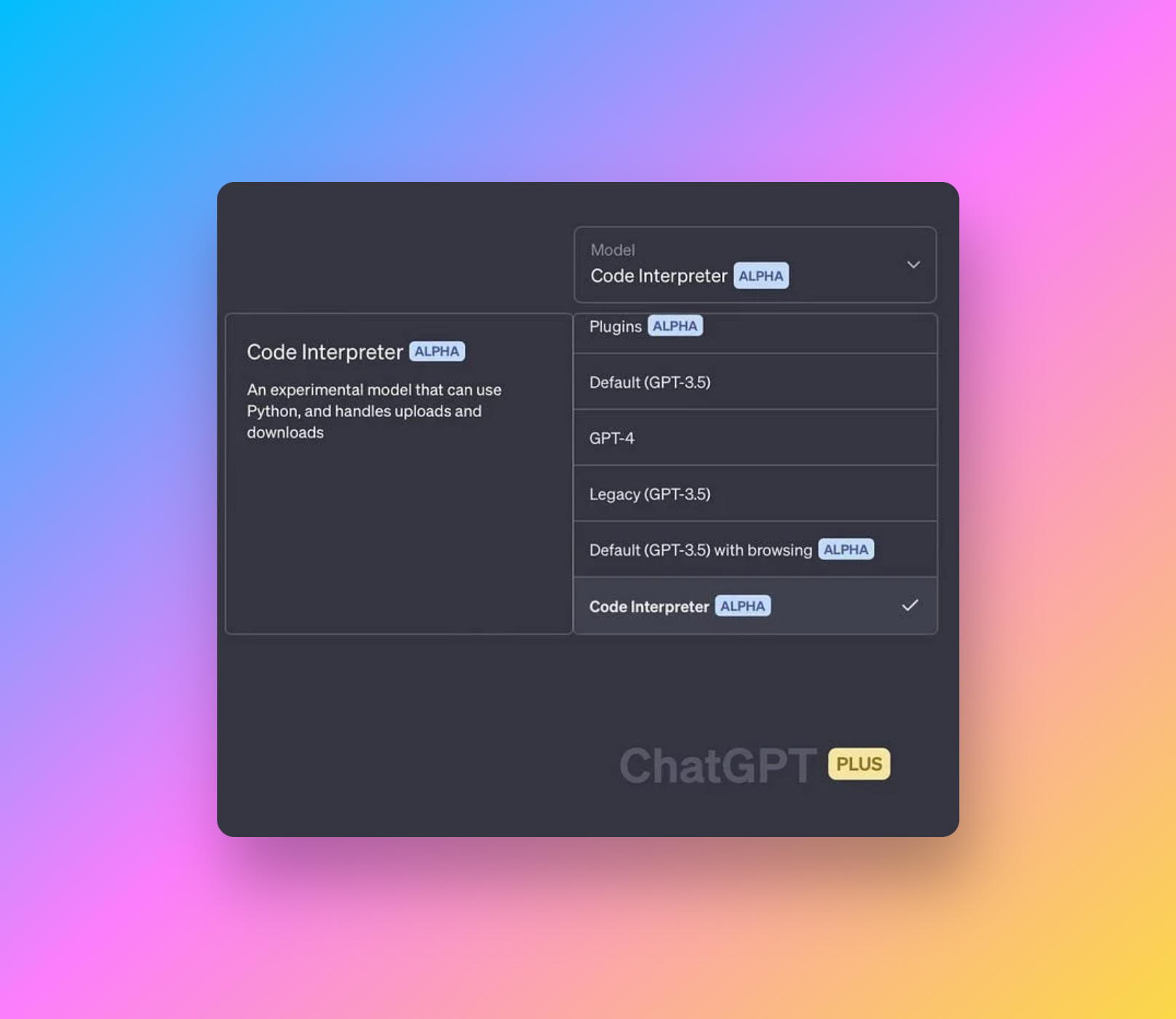
Example:
You want to visualize product revenue over time. Traditionally you’d write SQL or Python.
With ADA, you simply say:
“Create a bar chart showing revenue by product for 2024 Q1 using the file I uploaded.”
And ChatGPT handles the rest—data parsing, plotting, axis formatting, labeling, and exporting.
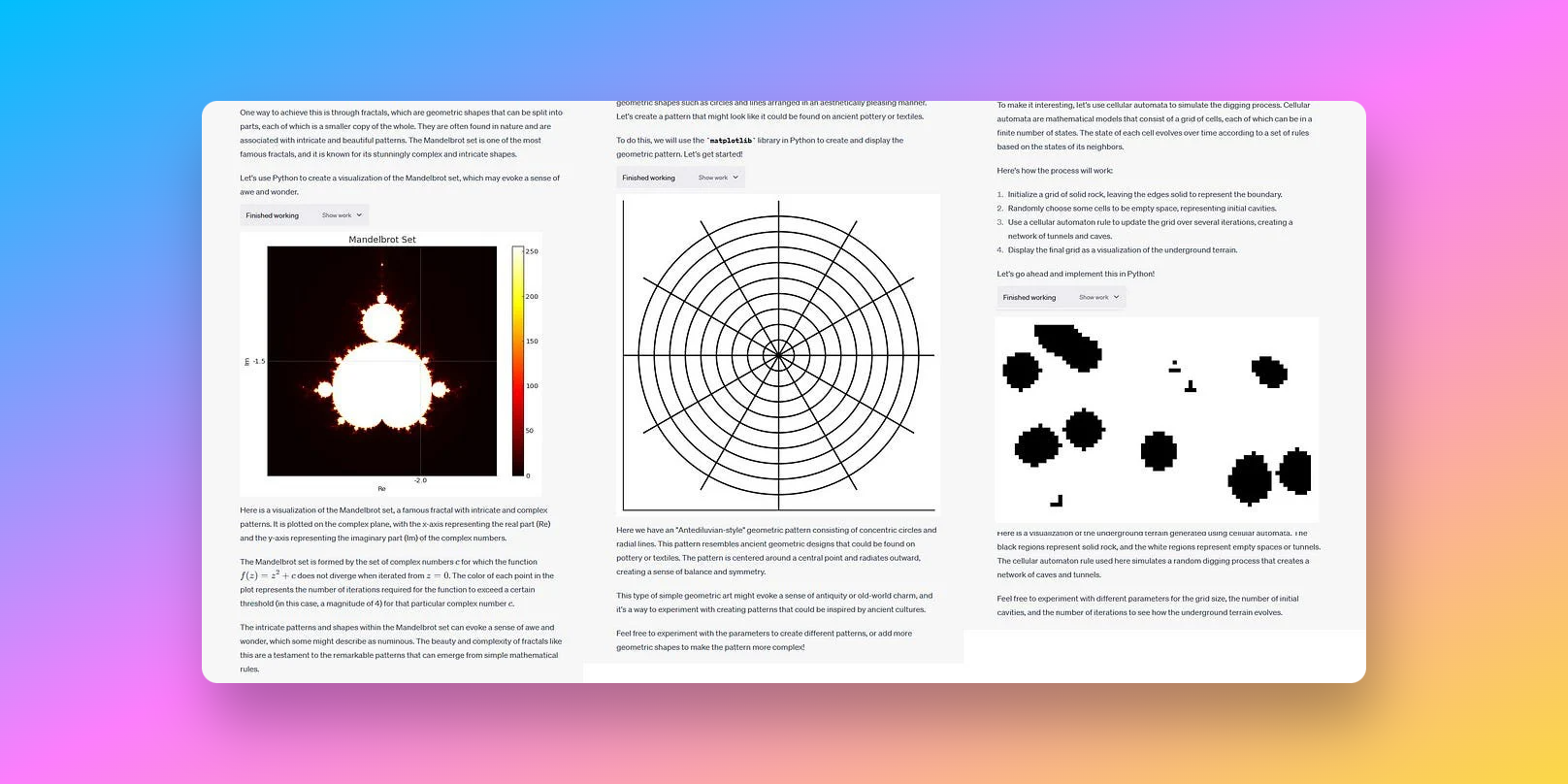
This works not only for bar charts, but also:
- line charts
- scatter plots
- heatmaps
- interactive visualizations
- statistical plots (histograms, boxplots, regression plots)
It’s like having a personal data analyst available at all times.
lab2.dev – Turn text prompts into Python apps. Build Streamlit apps instantly.→
How the ChatGPT Code Interpreter (ADA) Changed Coding
Before ADA, users needed to:
- know Python
- install libraries
- manage environments
- debug errors
Now, users can simply describe what they want.
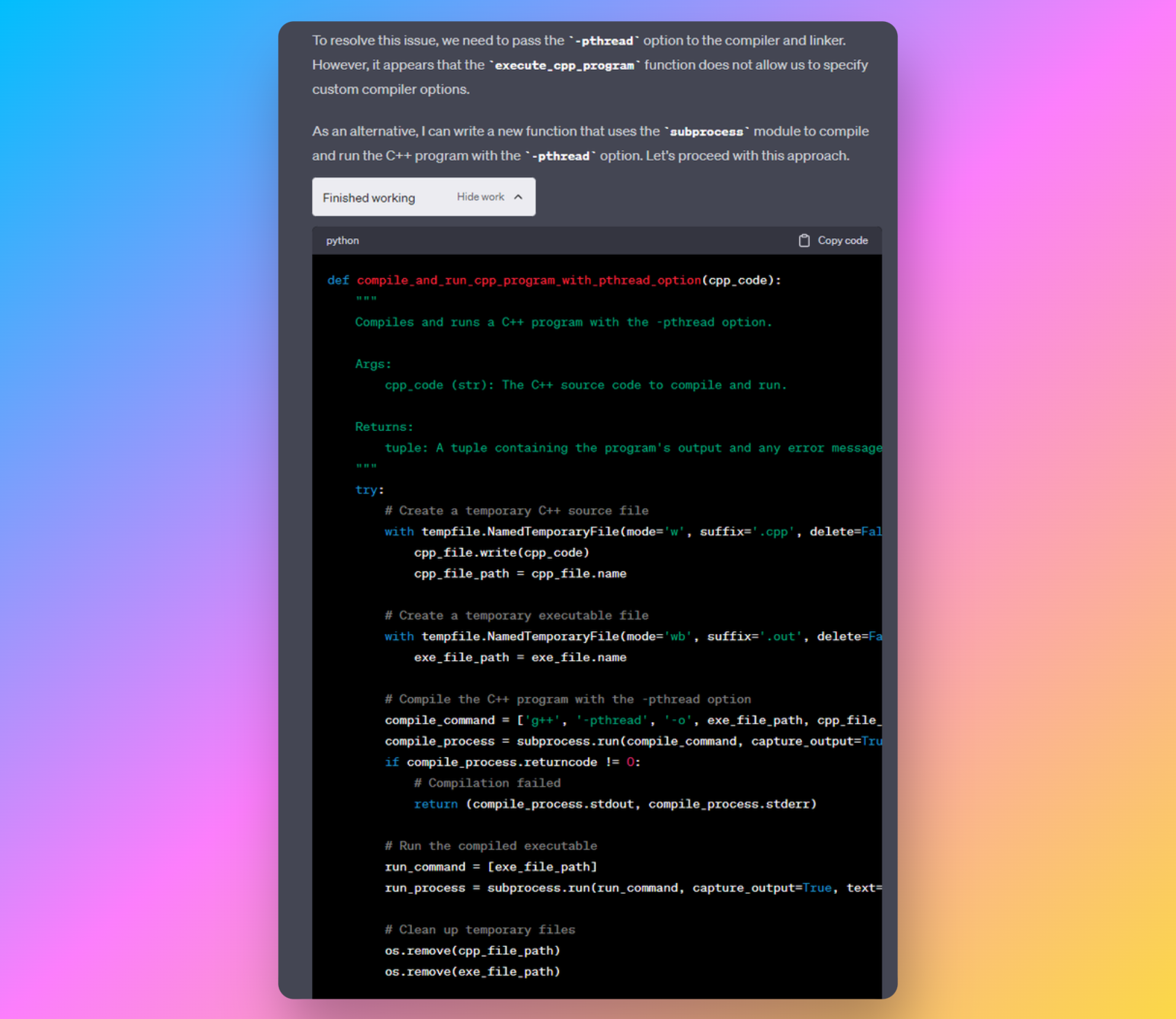
ADA turns natural language into executable code. It handles:
- data cleaning
- data transformation
- statistical modeling
- regression
- clustering
- visualization
All automatically.
It bridges the gap between technical skill and analytical creativity, empowering anyone—from marketers to students—to produce high-quality analytics without coding expertise.
Real-World Examples of ChatGPT Code Interpreter for Data Visualization
Example 1: Descriptive Analysis + Visualizations
Ethan Mollick uploaded an XLS file and asked ADA:
- “Give me descriptive statistics.”
- “Visualize key patterns.”
- “Run regressions and diagnostics.”
The model automatically produced:
- summary tables
- histograms
- scatter plots
- regression outputs
- insights and explanations
This demonstrates ADA’s ability to perform multi-step analytics with just natural language prompts.
Example 2: Sensitivity Analysis + Adaptive Problem-Solving
Even when it temporarily lost session data, ADA reconstructed the analysis logic, showing its ability to:
- reason through missing data
- re-derive intermediate steps
- continue analysis without starting over
This is a powerful example of ADA’s robustness in messy real-world workflows.
Example 3: Visualizing UFO Sightings Heatmap
Given a raw, messy dataset, ADA cleaned the data and generated:
- a heatmap
- a geographical visualization
- outlier detection
All from a single instruction.
These examples highlight how ADA transforms complex analytics into conversational workflows.
How to Use ChatGPT Code Interpreter (ADA) for Data Visualization
Getting started is simple:
- Upload your dataset (CSV, Excel, JSON, TSV, PDF tables, ZIP files).
- Describe what you want:
“Create a scatter plot of price vs. quantity for each category.”
- ADA handles data parsing, plotting, and exporting.
- Ask follow-up questions conversationally.
No coding. No tool switching. No setup.
This makes ADA useful for:
- marketers analyzing campaign data
- journalists investigating public datasets
- students working on research
- business teams reviewing internal metrics
- analysts creating dashboards faster
Use Cases of ChatGPT Code Interpreter (ADA)
ADA can perform:
✔ Exploratory Data Analysis (EDA)
- Summary statistics
- Missing value detection
- Correlation heatmaps
✔ Data Visualization
- All chart types (Matplotlib, Seaborn, Plotly, Altair)
- Statistical plots
- Time-series charts
✔ Data Cleaning
- Deduplication
- Type correction
- Outlier detection
✔ Data Science Tasks
- Regression
- Clustering
- Forecasting
- Feature engineering
✔ File Automation
- Convert CSV → Excel
- Merge files
- Extract tables from PDFs
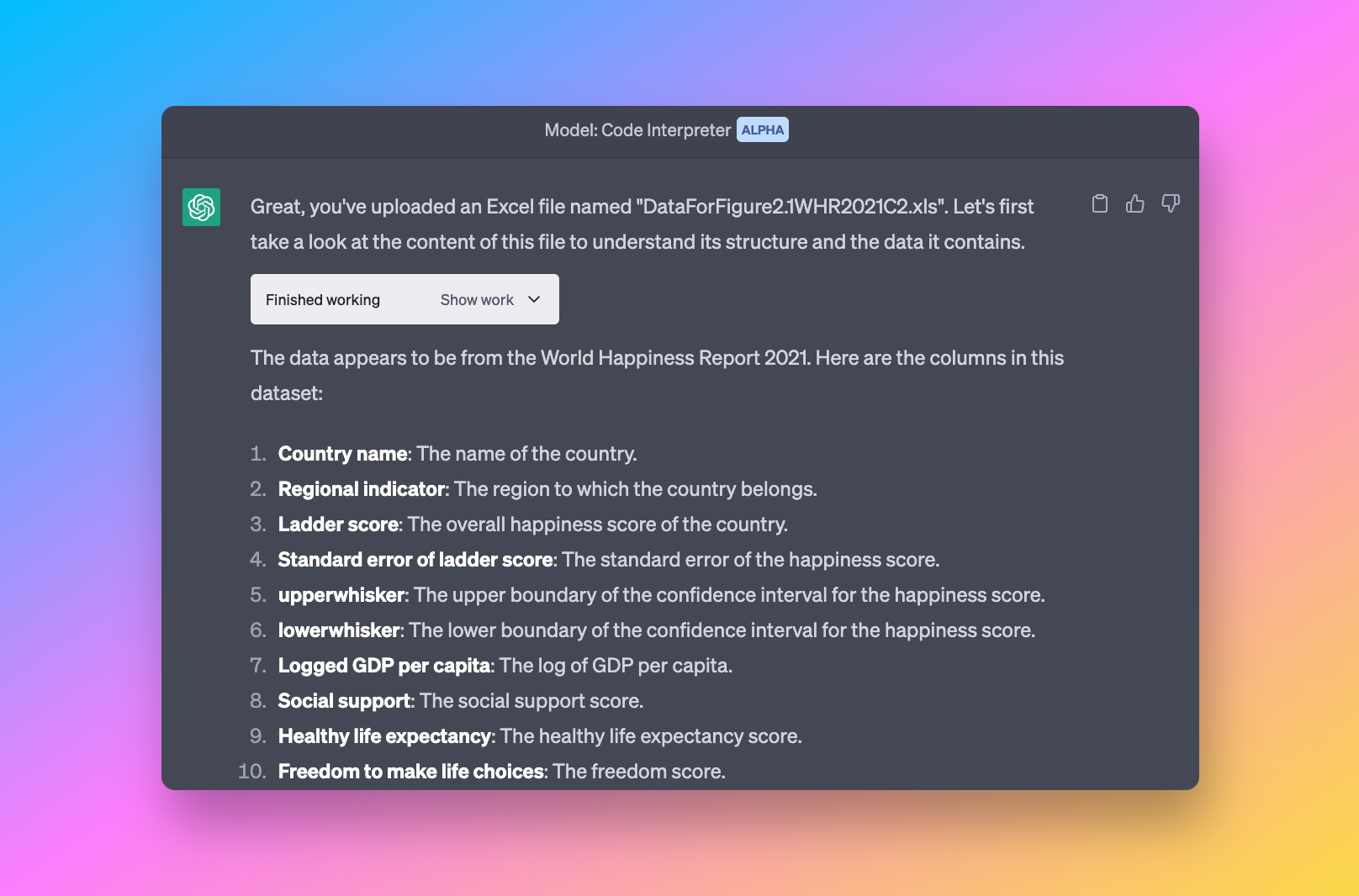
It’s a full data-science toolkit accessible through plain English.
The ChatGPT Code Interpreter (ADA) and Machine Learning
ADA is powered by machine learning models that can:
- interpret user intent
- generate Python code
- inspect output
- self-correct errors
- iterate until the result is correct
This creates a feedback loop that mimics how human analysts work.

Read more about the technology behind ADA in this Nature report: https://www.nature.com/articles/d41586-023-01833-0 (opens in a new tab)
The Future of Coding: Conversational + No-Code
Tools like ADA merge:
- no-code
- low-code
- traditional programming
- AI-powered reasoning
Instead of writing code manually, users describe tasks, and AI writes optimized code instantly.
This is accelerating the broader No-Code / AI-Assisted Analytics movement — giving everyone the power to work with data.
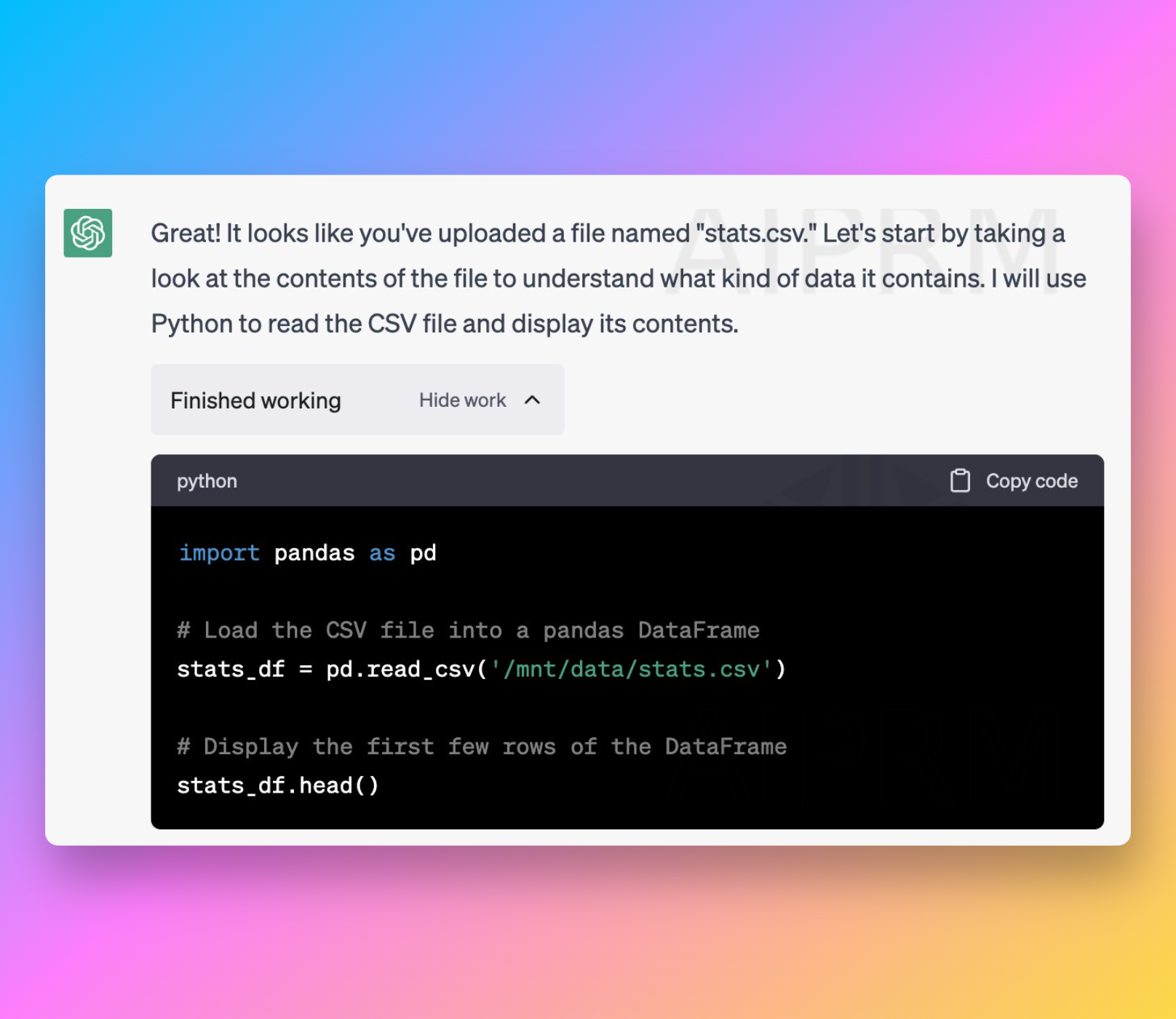
For example, solutions like VizGPT and Visualize Airtable Data are extending this movement by letting users build dashboards and charts purely with prompts.
FAQs
What is the ChatGPT Code Interpreter (ADA)?
It is an AI-powered Python execution environment built into ChatGPT, allowing users to analyze data and generate visualizations through natural language.
How do I use it?
Upload a file → describe the analysis → receive charts, summaries, and code execution results.
What languages does it support?
Mainly Python, with full support for data libraries like Pandas, Matplotlib, Seaborn, Plotly, NumPy, Scikit-Learn.
Is it free?
It is included with ChatGPT Plus, Team, and Enterprise plans.
It’s not available for me — alternatives?
You can use VizGPT, which generates data visualizations directly from text prompts.
Conclusion
The ChatGPT Code Interpreter (ADA) is transforming how people work with data. By combining natural-language interaction with powerful Python execution, ADA eliminates the technical barriers to data visualization, analysis, and automation.
Whether you're a beginner exploring your first dataset or a professional accelerating your workflow, ADA offers a faster, simpler, and more intuitive way to turn data into insight.